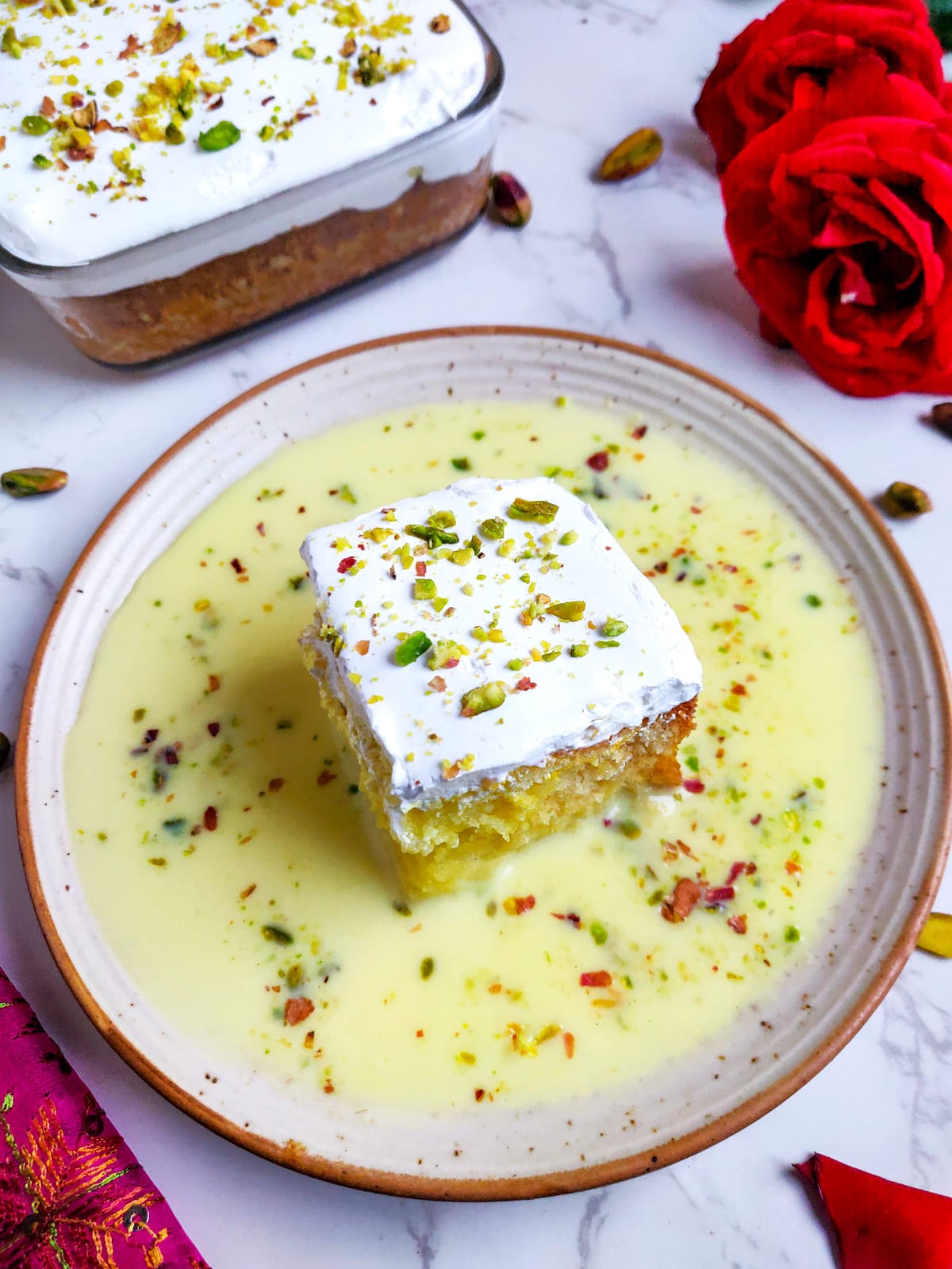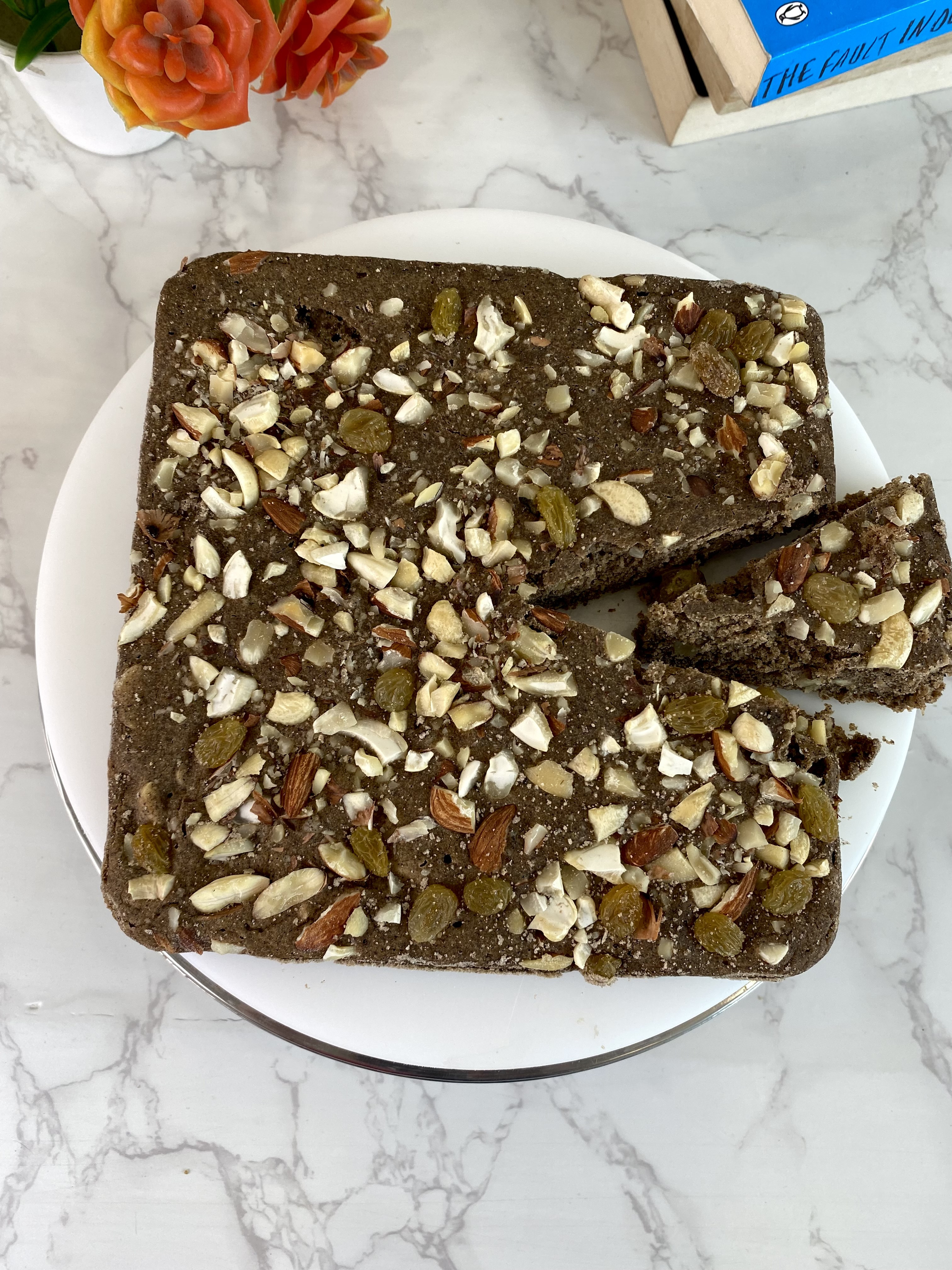The nine-day festival of Navratri is dedicated to nine forms of Durga, namely Shailaputri, Brahmacharini, Chandraghanta, Kushmanda, Skanda Mata, Katyayani, Kaalratri, Mahagauri, and Siddhidatri. This Tuesday marks the seventh day of the Hindu festival when devotees worship Maa Kaalratri and offer jaggery or food made from jaggery as prasad to this avatar of Durga.
Needless to say, our mouths are already drooling with the thought of all those desserts making their way from the kitchen to the temple. As the festivities and traditional spirits reach their peak this Navratri week, try these recipes of Rasmalai Cake and Kuttu Atta Dry Fruit Cake as they are must-have desserts to boost your energies.
Rasmalai Cake

Ingredients for Rasmalai Cake:
1/2 cup yogurt
1/2 cup sugar
1/4th cup oil
1/3rd cup milk (room temperature)
5-6 strands of saffron soaked in milk
1 cup all purpose flour
1/4th cup cornflour
1/2 tsp baking powder
1/4th tsp baking soda
A pinch of salt
Ingredients for soaking:
1 cup milk
1/3rd cup sugar
few strands of saffron
Ingredients for decoration:
Pistachios
Whipped cream - 1/2 Cup
Method for Rasmalai Cake :
Mix yogurt with sugar and oil until you get a smooth batter. Now add milk and saffron soaked in milk in the mixture and mix it well. Then add all the dry ingredients ie all purpose flour, cornflour, baking powder, baking soda and a pinch of salt.
Mix everything together and transfer the mixture into a baking dish. (Avoid using cake tins because we will assemble the cake in the dish only). Preheat the oven at 180 C for 10 minutes and then bake this cake in a preheated oven at 180°C for 35-40 minutes.
After 25-30 minutes, insert a skewer in the middle of the cake and if it comes out clean, it means the cake is ready. Now let the cake cool at room temperature for at least 30 minutes.
Method for soaking:
Boil milk with sugar and a few strands of saffron for 10 minutes or until it reduces to a little bit. Note that rasmalai soak is slightly thin so you don't have to reduce the soak way too much. After 10 minutes, switch off the flame and our rasmalai soak is ready.
Once both cake and soak are ready, poke holes in the cake with the help of a skewer and pour the 1/3rd soak over the cake until it gets completely drenched in the rasmalai soak. Now decorate the top with whipped cream and pistachios and let everything chill in the refrigerator for at least 1-2 hours.
After both cake and soak are super chill, it is time to serve the cake. Place a cube of cake in the centre of the plate and add soak around the cake in the plate. Decorate it with some pistachios and rose petals (optional) and our rasmalai cake is ready.
(Recipe: Kuljyoti Dhingra)
Kuttu Atta Dry Fruit Cake

Ingredients:
Kuttu atta - 1 cup
Baking powder - 1/4th tsp
Baking soda - 1/4th tsp
1 banana smooth paste
Curd - 1/4th cup
Powdered sugar - 1/4th cup
Cooking oil - 2 tsp
Milk - 1 cup
Chopped dry fruits - cashews, almonds and raisins.
Method:
Take 1 bowl and add kuttu atta, baking powder, baking soda and mix it well. Dry ingredients are ready.
For wet ingredients - take 1 bowl and add banana smooth paste, curd, powdered sugar, cooking oil and give it a good mix. Wet ingredients are ready
Then add wet ingredients in dry ingredients and give it a good mix. After that, add 1 cup milk gradually and mix it well to make a smooth consistency batter.
When batter consistency is smooth add chopped dry fruits and mix it well. After mixing it well, your smooth consistency Kuttu Atta Dry Fruit Cake batter is ready.
Pour the batter in a cake tin and spread it evenly. Garnish the batter with chopped dry fruits. Dry fruits can be of your choice.
Bake the cake in Pre-heated kadai for 30-40 minutes on medium flame. After 30-40 minutes, your tasty delicious Kuttu Atta Dry Fruit Cake is ready.
(Recipe: Aman Singhal)
‘Nava’ means nine and ‘ratri’ means nights hence, the festival of Navratri is a Hindu festival that spans nine nights and ten days where devotees worship nine avatars of Durga. It symbolises the victory of Durga over demon Mahishasura, signifying the victory of good over evil.
In the northern and western parts of India, Ram Leela (retelling of the Ramayan mythology) is held and the festivities end with Dusshera where effigies of Ravana are set on fire to signify Ram’s victory over Ravana. A fast is also kept by the devotees, either on all the nine days or in joda, the first two or the last two days of the Navratri, to please and seek blessings of Durga.


